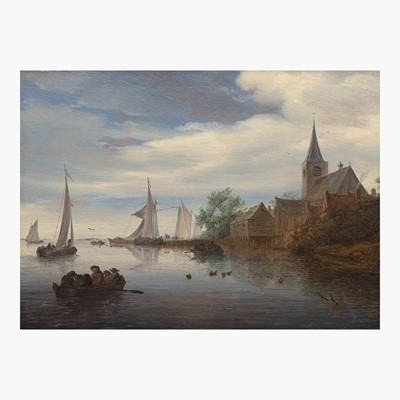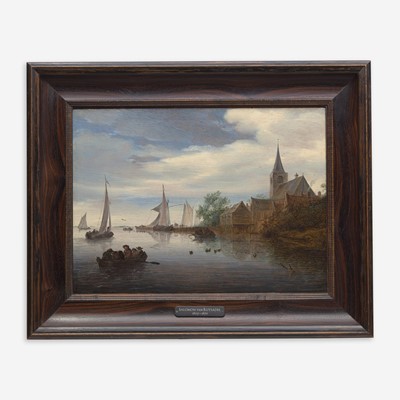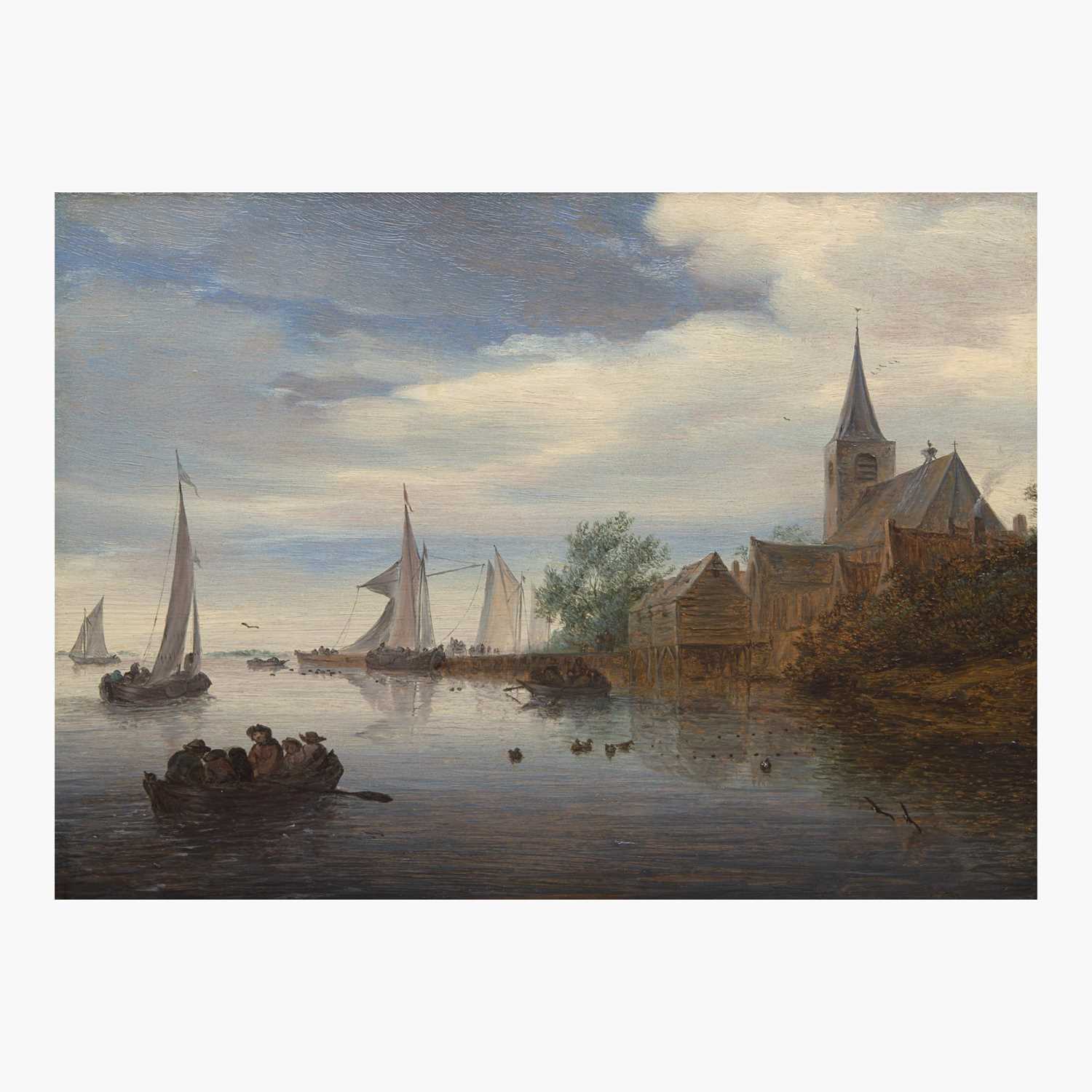February 22, 2022 12:00 EST
European Art and Old Masters
2
Salomon van Ruysdael (Dutch, B.C. 1602–1670)
Sailing by the Old Dutch Town
Oil on cradled panel
9 7/8 x 13 1/2 in. (25.1 x 34.3cm)
Executed circa 1645-1650.
Provenance
Christie's, New York, sale of January 29, 1998, lot 116 (sold as A River Landscape with Sailing Boats by a Village).
Acquired directly from the above sale.
Richard Green Ltd., London, United Kingdom.
Acquired directly from the above.
Private Collection, Massachusetts.
By descent in the family to the present owner.
Sold for $103,950
Estimated at $60,000 - $100,000
Oil on cradled panel
9 7/8 x 13 1/2 in. (25.1 x 34.3cm)
Executed circa 1645-1650.
Provenance
Christie's, New York, sale of January 29, 1998, lot 116 (sold as A River Landscape with Sailing Boats by a Village).
Acquired directly from the above sale.
Richard Green Ltd., London, United Kingdom.
Acquired directly from the above.
Private Collection, Massachusetts.
By descent in the family to the present owner.
Literature
Wolfgang Stechow, Salomon van Ruysdael, Berlin, n.p., 1938, no. 474, p. 142 (as Ruderboot Mit Sechs Mann i.e. The Six-Man Rowing Boat).
Note
Salomon van Ruysdael is one of the important links in a generation of Ruysdael artists that started with his father, Jacob Jansz de Gooyer and ended with his own nephew, Jacob van Ruysdael. Born in Naarden around 1601, Ruysdael spent most of his career in Haarlem, where he joined the Guild of St. Luke in 1623. While his early work resembled that of Esaias van de Velde and Pieter de Molijn (landscapes of modest size and subject, mostly dunes and trees set in the environs of Haarlem, set in a restricted color palette), his work took a serious turn after 1645, his compositions becoming more spacious, featuring cloud-filled skies and broad expanses of water.
As exemplified by the present oil, the artist employs a bolder (yet tonal) color palette, which not only makes a coherent, well-balanced picture plane, but also accentuates the perspective of the scene as it eases the viewer's eye progression into the distance. Our vision is indeed first directed towards the quintessential ferry boat at bottom left, a motif which Ruysdael so frequently employed in his paintings, before being attracted by the high church steeple on the right-hand side of the composition, and finally set back into the background where boats of various sizes stretch into the horizon. While the deep blues of the sky and sea offer a warm, charming contrast with the sand-colored buildings of the town on the river bank, the savant use of black throughout the composition, to outline the silhouette and shadows of the main figures, anchors the scene and gives it a sense of floating stability.
It is with such atmospheric and finely detailed works (see the stork's nest on top of the church) that Ruysdael became one of the leading landscape painters of his generation, one of the most fervent tenant of Dutch realism, which inspired a fruitful generation of artists after him such his nephew, but also Meindert Hobbema and Aelbert Cuyp.
We wish to thank the Rijksbureau voor Kunsthistorische Documentatie, also known as R.K.D, for confirming the authenticity of the present work.


